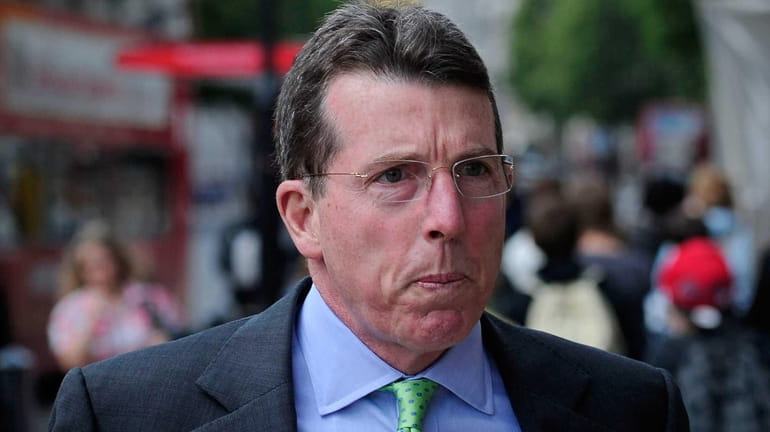Fitting punishment for London bankers over LIBOR-fixing scandal

Bob Diamond, chief executive of British bank Barclays, resigned on Tuesday July 3, 2012, caving in to political pressure over a rate rigging scandal which may trigger criminal charges. (June 8, 2011) Credit: AFP/Getty Images
Those satisfying thuds you keep hearing from the big British bank Barclays are the sounds of heads rolling. You may not have recognized this noise right away because it's so very rare in banks on this side of the pond.
Barclays appears to have manipulated the crucial London Interbank Offered Rate, which may sound obscure but is used to set all kinds of other interest rates, including for consumer lending, on both sides of the Atlantic.
The bank agreed to pay $450 million to settle the LIBOR allegations with British and American regulators, but that hasn't quelled the scandal. Marcus Agius, the Barclays' chairman, has turned in his resignation, as have controversial chief executive Bob Diamond and Jerry del Missier, the chief operating officer.
To an American suffering through the Great Recession, these resignations are shocking. The leading executives of our giant banks, after all, not only drove their institutions into insolvency through reckless mortgage lending, but when the housing bubble they pumped up finally exploded, it nearly immolated the global economy. U.S. taxpayers had to bail out the lot of them. In the United States, however, there have been no resignations on a par with those we've just seen from Barclays, whose foul misdeeds pale by comparison.
On the contrary, the leaders of top American banks lived to lobby another day, battling measures in Washington that might rein in their risk-taking -- which of course is our risk-taking, since they are still too big to let fail.
The LIBOR scandal, however, which involves the banks cheating each other and hiding their own institutional ill-health, may have a different result. E-mails released as part of the Barclays settlement with American and British regulators raise troubling questions about how much the central bankers, including the Federal Reserve Bank of New York, knew about the rate-fixing practice while turning a blind eye. Federal regulators and prosecutors must continue unraveling this complex mystery that could involve at least a dozen major banks.
This time, wrongdoing should have a consequence for the bankers.
